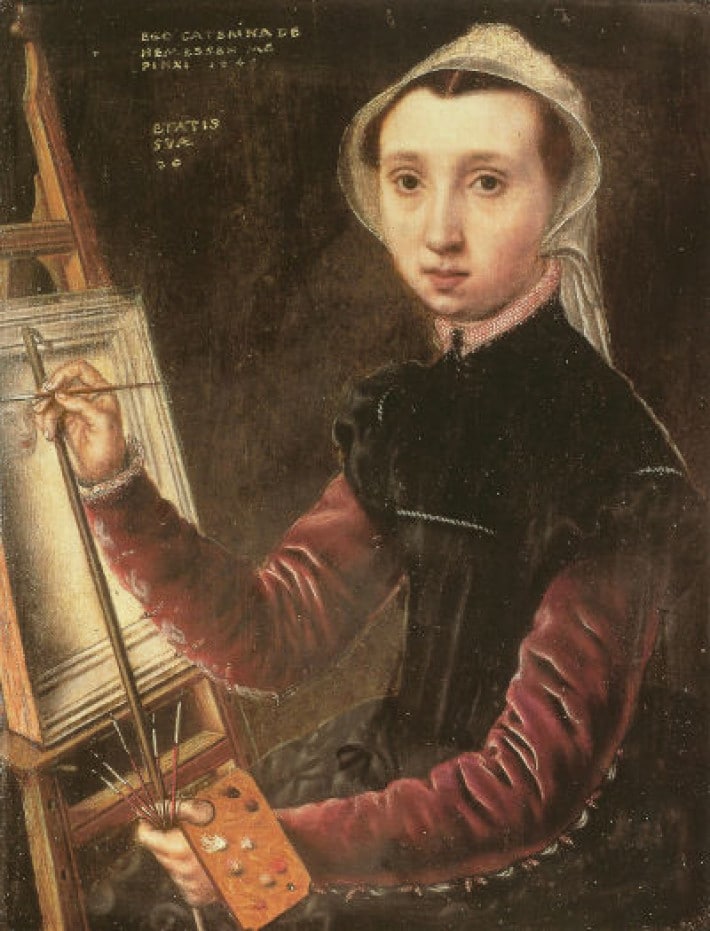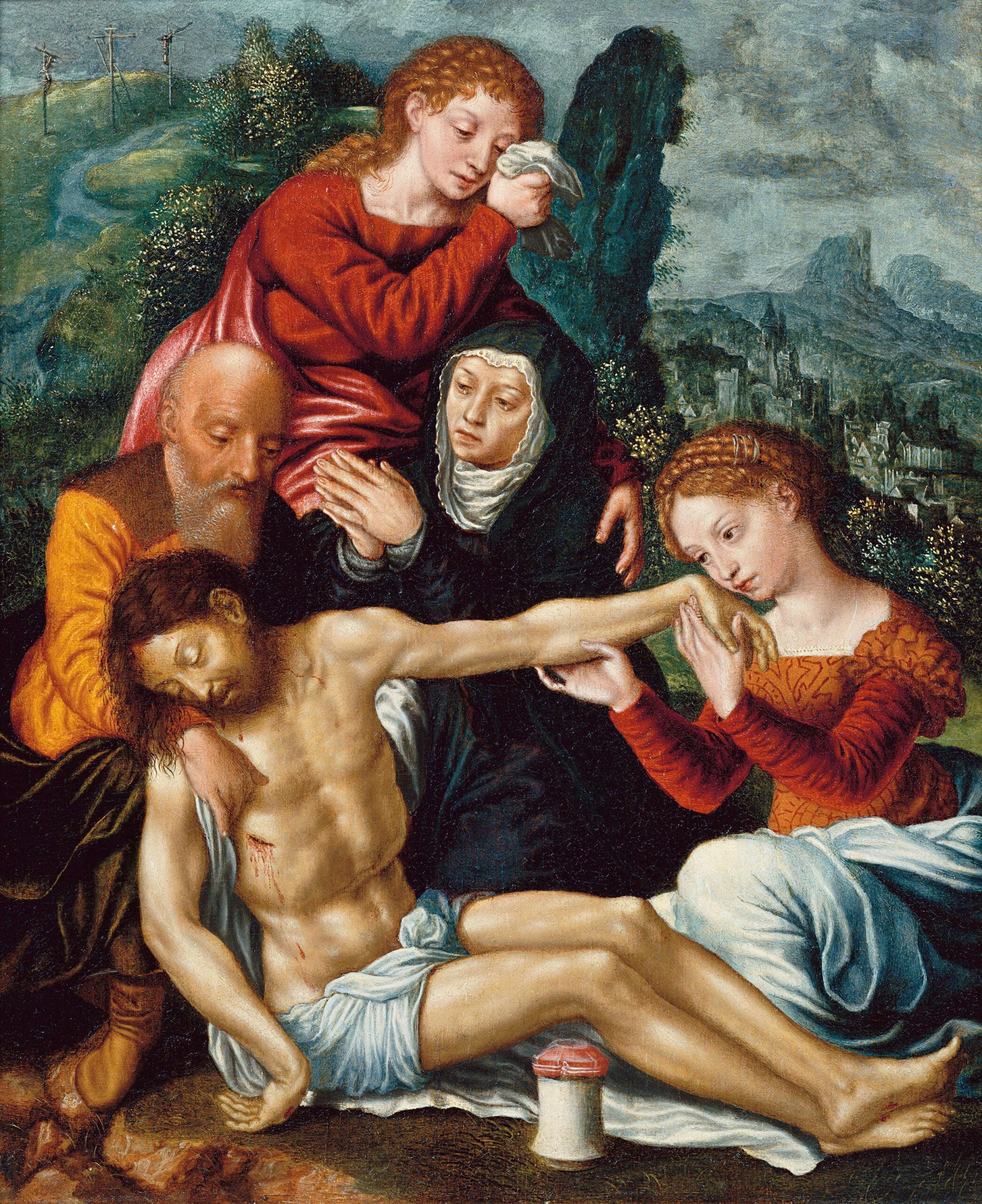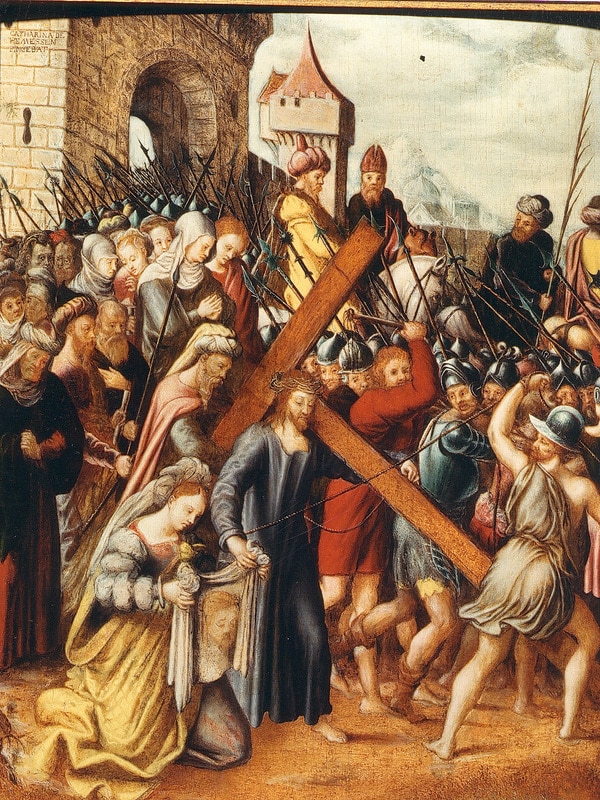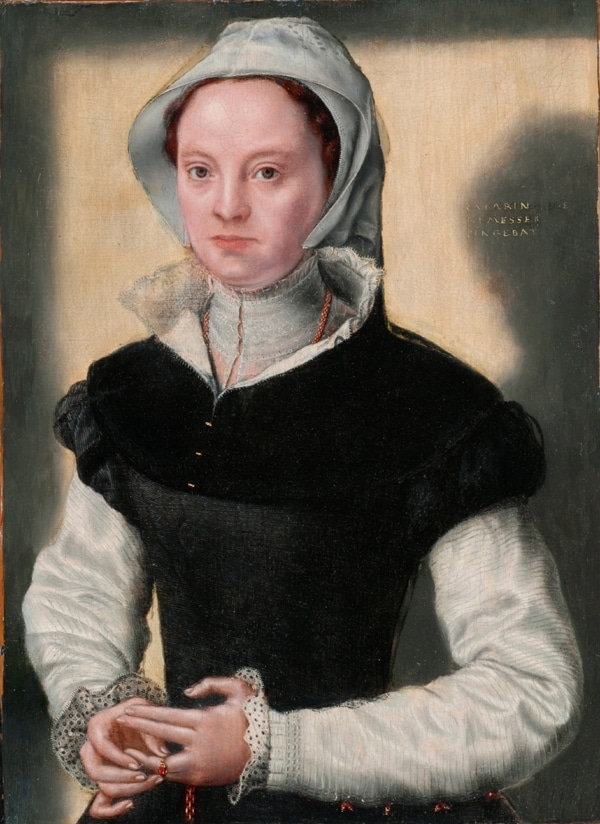Catharina van Hemessen Brought People to Life in Small Details
In the past, female artists have not always been valued. Most were overshadowed by their male counterparts, excluded from education and the art world, so that their names never appear in the history books. Heleen Debruyne takes them out of oblivion and gives them the honour they deserve. In the first episode we present you Catharina van Hemessen: ‘She made a name for herself – and not as a slavish follower of her father’s slightly pompous style.’
She looks a bit forlorn, there behind her easel, but does not seem hesitant about sketching the woman’s face on her canvas. Or is that intense concentration that we see in her eyes? Perhaps she fears getting paint on the expensive, velvet dress that she doesn’t usually wear when she’s painting. Or does she look at us like this because she’s trying something radical and new?
 Catharina van Hemessen, self-portrait, 1548
Catharina van Hemessen, self-portrait, 1548© Kunstmuseum Basel
The pale, girlish face doesn’t immediately suggest that this woman could be an innovator in the art of painting, but do not underestimate her. Her self-portrait, done in 1548, is the first in the Low Countries to show an artist at work. The text at the side of the painting, Ego Catharine de Hemessen me pinxit (roughly: Catherine van Hemessen painted me) shows her pride in her work. This, too, is exceptional, as there are not many signatures of female artists dating from this period. Of course, not all painters signed their work and women were not admitted to the guilds or academies. It was too dangerous: they might pick up naughty ideas from exposure to all the nude models.
But Catherina was the daughter of the artist Jan van Hemessen. His fashionable compositions – a bit of Renaissance style, many genre painting and Biblical scenes in 16th-century costume – sold well. The rich patricians of dynamic 16th-century Antwerp liked to display their artistic tastes.
As a child, Catharina must have spent a lot of time hanging out in her father’s studio between the paintbrushes and pigments. Maybe she copied her father’s paintings on spare pieces of wood until her father could no longer deny her talent. She may have been allowed to help paint backgrounds or clothing on his canvases. In this way, she served her apprenticeship. Painters’ daughters often worked in the family studios, though usually behind the scenes. But she didn’t stop there.
 Catharina van Hemessen, Lamentation of Christ
Catharina van Hemessen, Lamentation of Christ© Snijders & Rockoxhuis, Antwerp
She tried her hand and even made a name for herself – and not as a slavish follower of her father’s slightly pompous style. The thirteen works that we know of, signed by her, primarily represent portraits and human forms on sober backgrounds. The elite enjoyed being painted by her and probably found it exciting and daring to pose for such a young woman. They stood there, static, in their expensive lace and brocades with their velvet hats and stiff white collars, but still Catharina managed to capture the nuances of their personalities.
A slight downward turn at the corner of the mouth, blue shading under puffy eyes, a suspicious glance to the left: these were the details that brought her subjects to life. And then there is her Lamentation of Christ, which shows that she dared to take on more important themes. This is a composition of several figures with the naked, broken body of Christ in the foreground, the city of Jerusalem in the background.
 Catharina van Hemessen, Christ Carrying the Cross, with the Meeting with Saint Veronica, between 1541 and 1560
Catharina van Hemessen, Christ Carrying the Cross, with the Meeting with Saint Veronica, between 1541 and 1560© private collection H. Boeykens, Nieuwerkerken, East Flanders
It seems that Catharina emulated the style and techniques of the Flemish Primitive School and not the Italianate style of her father. The painting is more concerned with emotion than form: consider the tenderness with which Mary Magdalene holds the dead hand of Christ, or how John the apostle wipes away his tears with a handkerchief.
We will never know how Catharina felt or what she thought about while working but we can speculate on a few things. Was she conversant in Latin? Her signature text suggests that she was. The idea to paint herself at her easel may have come from an illustrated book of Plinius that was in circulation at that time, which included miniatures of famous female painters of the Classical World at work.
Catharina was most productive before her marriage in 1554 to Christian de Morien at the age of twenty-six. De Morien was an organist and composer in the service of Maria of Hungary, regent of the Low Countries and sister of Emperor Charles V. Was Catharina willing to step aside and busy herself with home-keeping in support of her husband’s career? Or did she feel frustrated and invisible? De Morien was happy to include his painter-wife: at the palace of Maria of Hungary, in Brussels, she was a lady of the court.
 Catharina van Hemessen, Portrait of a Lady, ca. 1551
Catharina van Hemessen, Portrait of a Lady, ca. 1551© Bowes Museum, Barnard Castle
When the empress moved her court to Madrid, the couple accompanied her. Catharina took charge of the artistic training of the ladies-in-waiting – though we can only wonder whether instructing elegant women with perhaps very little artistic talent was something she enjoyed. Regardless, the couple maintained an excellent relationship with the empress, who, when she died, she noted in her will that their ‘unique and excellent’ services made them deserving of a bequest large enough to allow them to finance the rest of their lives in Antwerp. However, the couple moved a few years later to ‘s Hertogenbosch, where Christian took up a post at the Chapter of St. John.
Catharina continued to be a trailing spouse, supporting her husband’s career, yet she still made a name for herself. In 1567, Guicciardini described her as one of the “celebrated women in the arts sill living” in his Descrittione tutti di paesi bassi (Description of the Low Countries). A century later, an artist from Dordrecht by the name of Johan van Beverwijk, returned to the subject of Catharina van Hemessen in his Van de Uitnementheyt des Vrouwelicken Geslachts (On the Excellence of the Female Gender). Today, the girl with the thoughtful, pale face has her own Wikipedia page, where the composer Christian de Morien is referred to as ‘the husband of…’.












